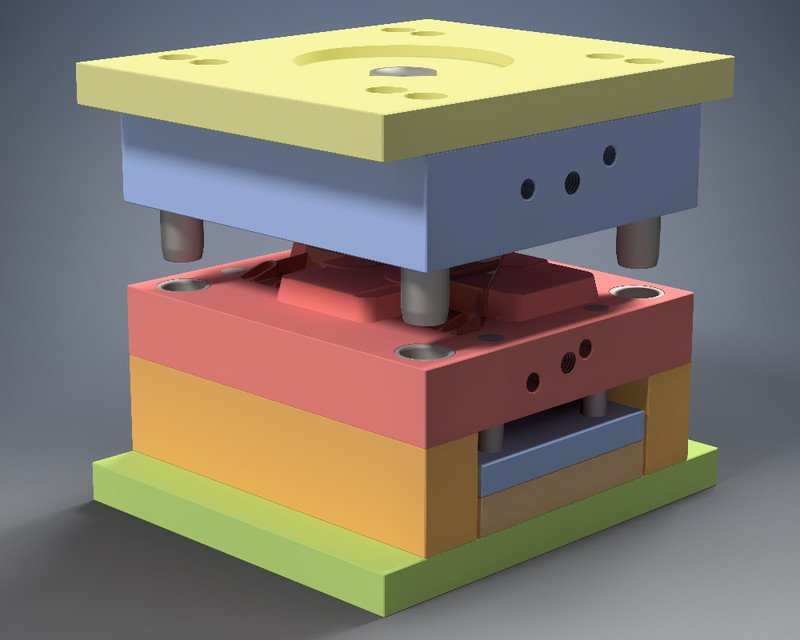Steps in Injection Mould Making with a Mould Manufacturing company
Injection moulding is a versatile manufacturing process widely used in producing plastic parts of varying complexities and sizes. The process involves several distinct stages, each crucial to ensuring the final product meets design specifications and quality standards. Additionally, there are different types of injection moulds tailored to specific applications, providing flexibility and efficiency in manufacturing. Here, we delve into the stages of injection mould making and explore the types of injection moulds commonly employed in the industry.
The following are the stages:
- Product Design and Prototyping: The process begins with product design, where engineers create 3D models using CAD software. Prototyping follows to validate the design’s feasibility and functionality before moving to production.
- Mould Design: Mould design is a critical phase involving detailed planning of the mould’s structure, material selection, and considerations for injection moulding parameters such as cooling channels and part ejection mechanisms.
- Mould Fabrication: This stage transforms the mould design into a physical mould. Precision machining techniques like CNC milling are commonly used to create mould cavities and cores with tight tolerances. The process may also involve EDM (Electrical Discharge Machining) for intricate details.
- Mould Polishing and Finishing: After fabrication, moulds undergo meticulous polishing to achieve smooth surfaces and eliminate any imperfections. Proper finishing ensures high-quality parts and extends the mould’s lifespan.
- Testing and Validation: The mould undergoes rigorous testing to ensure it meets dimensional accuracy and can withstand the stresses of injection moulding cycles. Adjustments may be made based on test results to optimize performance.
- Production: Once validated, the mould is ready for production. The injection moulding machine injects molten plastic material into the mould cavity, where it cools and solidifies to form the desired part. This process repeats cyclically, enabling high-volume production.
Types of Injection Moulds:
- Cold Runner Moulds: In cold runner moulds, the plastic is injected into a runner system that remains at room temperature. This system is subsequently ejected along with the part, which can lead to material wastage but is cost-effective for simpler designs.
- Hot Runner Moulds: Hot runner moulds use a heated manifold and nozzles to inject molten plastic directly into the mould cavity. This reduces material wastage as the runner system is reusable. Hot runner moulds are ideal for high-volume production and intricate part designs.
- Family Moulds: Family moulds have multiple cavities to produce identical or different parts simultaneously. They are efficient for batch production, reducing cycle times and overall manufacturing costs.
- Insert Moulds: Insert moulds incorporate metal or plastic inserts into the mould cavity before injection. This allows for encapsulating inserts with plastic, enabling complex part designs and integrating functionalities like threaded inserts.
- Prototype Moulds: Prototype moulds are used for low-volume production and rapid prototyping. They are cost-effective and quick to manufacture, facilitating design validation and market testing before investing in production tooling.
Injection moulding remains a cornerstone of modern manufacturing due to its efficiency, scalability, and ability to produce intricate parts with consistent quality. By understanding the stages of injection mould making and the types of moulds available, manufacturers can leverage this technology to meet diverse industrial and consumer demands effectively.
The Best way to Begin!
Partnering with Onemold right from the time the concept is discussed and the functionality of the product is understood the product design can be developed and further improvised bringing the actual vision to reality. Whether it is a simple product a complex one the product design is key for any business is to become a successful one.
After the product design is made the Mould structure and design is developed by experienced designers and engineers to meet the expected quality and finish for the final product. With the expertise, experience and desire to meet high quality standards a great team of qualified engineers and designers can achieve unmatched quality, finish and durable moulds. Injection moulds are made in hundreds of factories today however finding the right match for your product and understanding the quality you expected can be a daunting task. Here is why Onemold offers services to make your search and procurement hassle free. Under one roof you can rely on Onemold from Product concept stage to product production.
Collaborating from the start of designing leads to the highest quality product at the lowest cost.
If you have a concept feel free to let us know and recieve a quote. Upload your concept now

